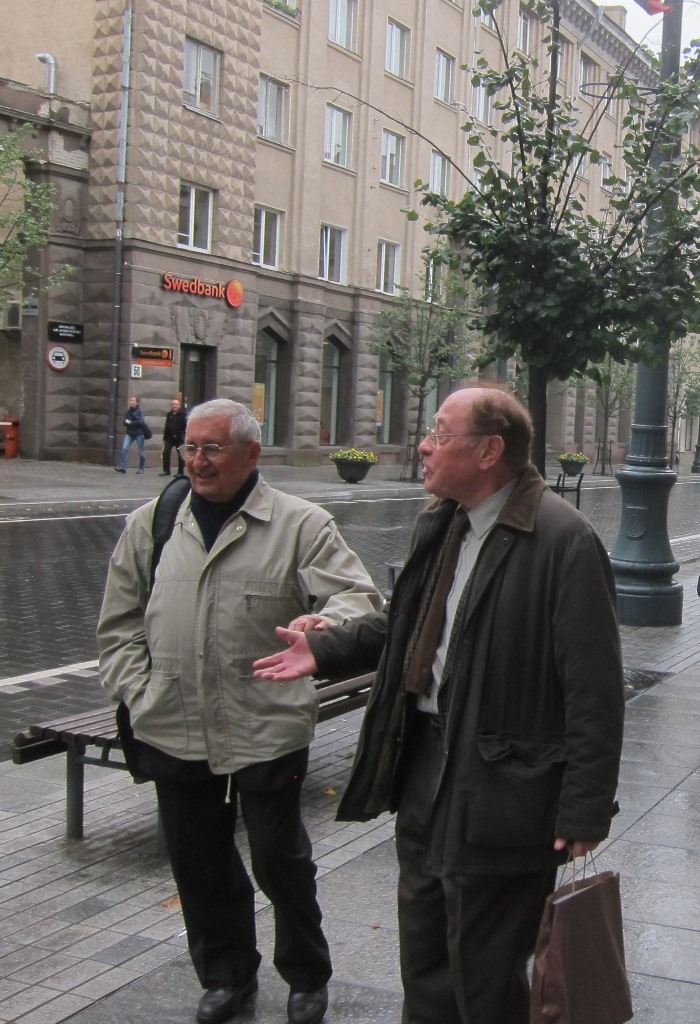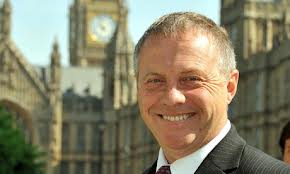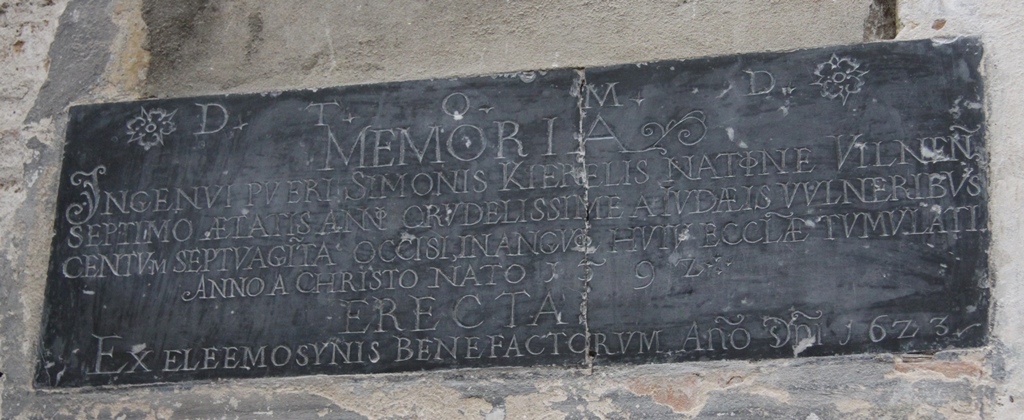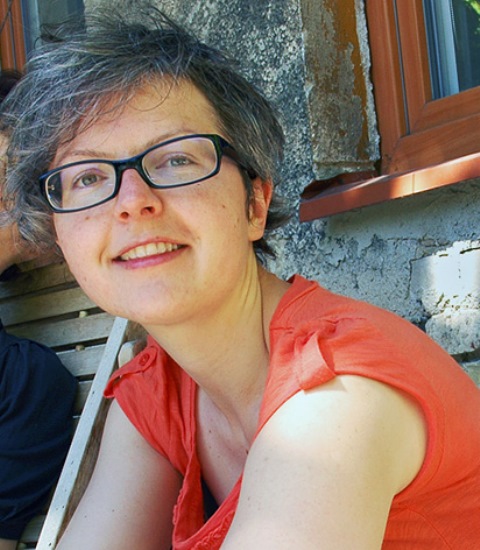The following is the text provided by the office of Simon Malkes (Paris) of the speech he delivered at a conference held at the Lithuanian parliament on 22 September 2013, as part of the series of events of the Fourth International Litvak Congress in Vilnius, Lithuania. Mr. Malkes, a Vilna native and survivor of the Vilna Ghetto, is president of the ORT school network.

Simon Malkes (right) speaks to an old friend on Gedimino Boulevard in central Vilnius, after his speech at a session of the Fourth International Litvak Congress held at the Lithuanian Parliament (Seimas).
My name is Simon Malkes. I am a French citizen, living in Paris since 1952. I am a rare survivor, among the less than one percent of Vilna Jewry. I survived thanks to the German officer Karl Plagge who managed the HKP automobile works camp in Vilnius between 1941 and 1944. In 2005, I succeeded to obtain from Yad Vashem in Jerusalem the Righteous Among the Nations title, posthumously, for Karl Plagge.

 On Friday, September 13, 2013, the Baltos Lankos publishing firm in Vilnius held a discussion at their main book sales outlet in Vilnius to present a book edited by Professor Jurgita Verbickienė about the Jews of Lithuania.
On Friday, September 13, 2013, the Baltos Lankos publishing firm in Vilnius held a discussion at their main book sales outlet in Vilnius to present a book edited by Professor Jurgita Verbickienė about the Jews of Lithuania.
